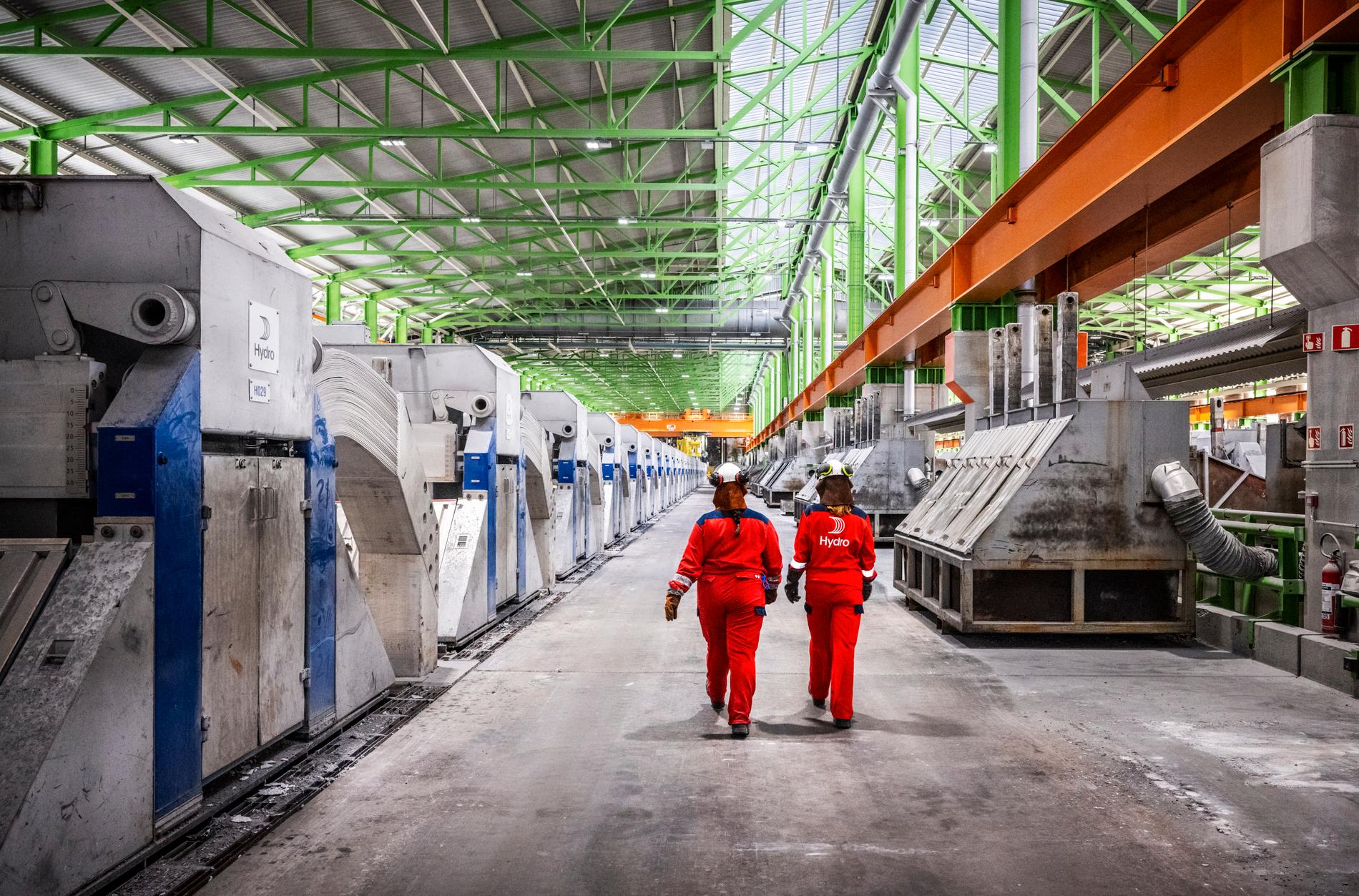The Norwegian economy developed more positively than expected in the fourth quarter. – Seen in isolation, this pulls in the direction of keeping the interest rate up, says the senior economist.
Hydro’s aluminum plant on Karmøy. Photo: Ole Berg-Rusten / NTBPublished:
Less than 50 minutes ago
Updated less than 20 minutes ago
After the repeated interest rate hikes by Norges Bank in the last couple of years, the GDP figures provide an important indication of how they affect the Norwegian economy.
In the fourth quarter of last year, the Norwegian mainland economy grew by 0.2 per cent, according to recent figures from Statistics Norway (SSB).
That’s slightly higher than a 0.1 percent decline in mainland GDP that economists had previously expected, according to Bloomberg estimates.
Read on E24+
Are you bored and demotivated at work? Here is the career coach’s best advice.
– It looks as if the development has been better than forecast, says senior economist Kyrre Aamdal at DNB Markets to E24.
In DNB’s forecasts, they had unchanged activity in the fourth quarter.
– Viewed in isolation, this pulls in the direction of keeping the interest rate up, at least until the second half of the year, says the senior economist.
Lower growth than normal
In around two years, Norges Bank has raised the key interest rate from 0 to today’s 4.5 per cent in order to overcome the sharp rise in prices.
Most of the major banks have several interest rate cuts for 2024 in their forecasts. It is nevertheless expected among many that the first interest rate cut could be delayed until just before the summer.
Chief economist Kjetil Olsen at Nordea Markets does not think Wednesday’s GDP figures will significantly change the outlook.
– Now it looks as if the Norwegian economy is going pretty much as Norges Bank has envisioned. So the tip of the scales for what happens next will be what happens outside, says Olsen, referring to what the central banks in the US and the eurozone choose to do, he says.
Interest rates bite
Overall, the mainland economy grew by 0.7 per cent from 2022 to 2023. Head of section Pål Sletten at Statistics Norway says that 2023 was characterized by high price increases, increased interest rates and reduced demand.
He says that the main picture is that growth has slowed down because of the interest rate hikes from Norges Bank.
– This means that we see lower growth than normal and relatively weak development in the economy, he says in a statement.
In November, the mainland economy fell by 0.2 per cent. The so-called Regional network report from Norges Bank has also suggested that activity in the Norwegian economy is on the way down.
Mixed development
Sletten says the background for the economic development through 2023 is mixed.
– Certain industries have developed more weakly than others. Falling demand for housing has reduced activity in the construction industry. Reduced commodity consumption has contributed to a decline in the commodity trading industry, he says.
At the same time, there was strong growth in oil investments and industries that supply the extraction industry.
2024-02-14 07:00:20
#Norwegian #mainland #economy #rose #cent #fourth #quarter


